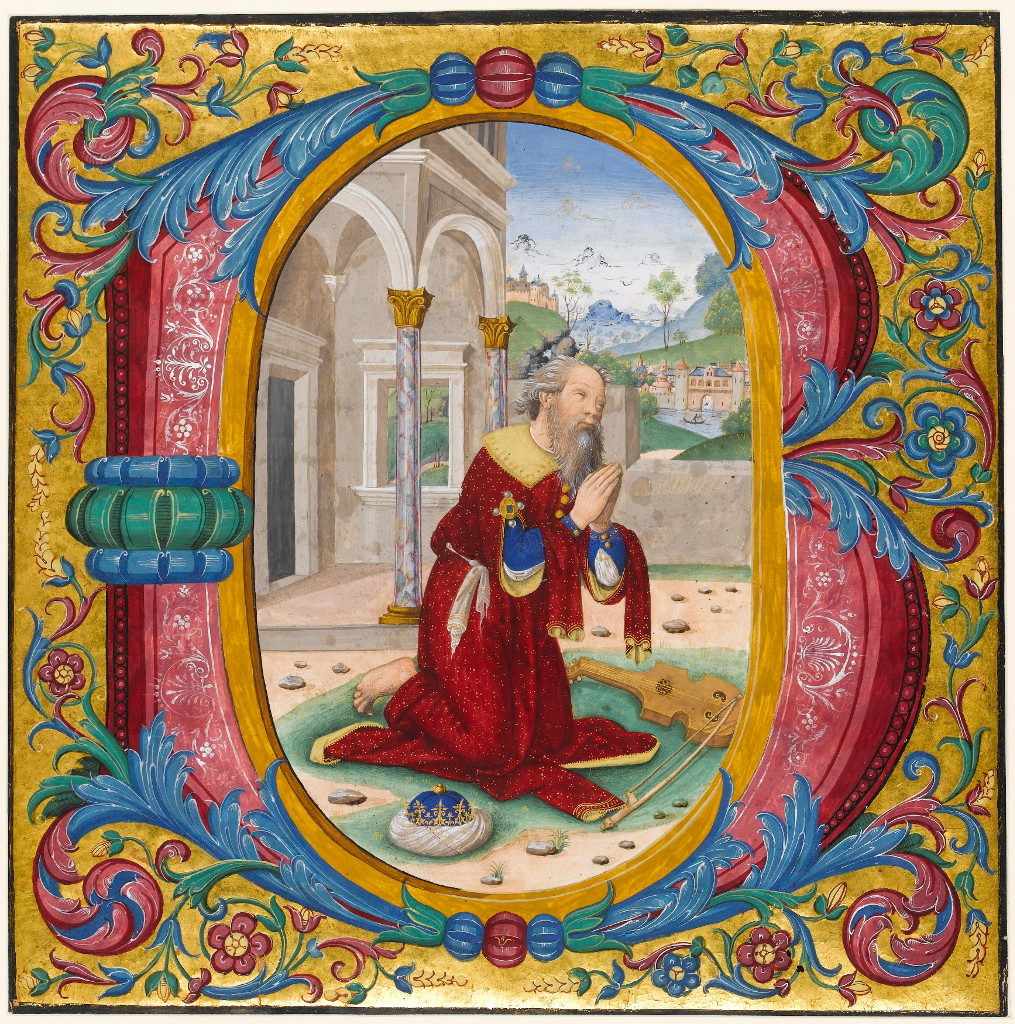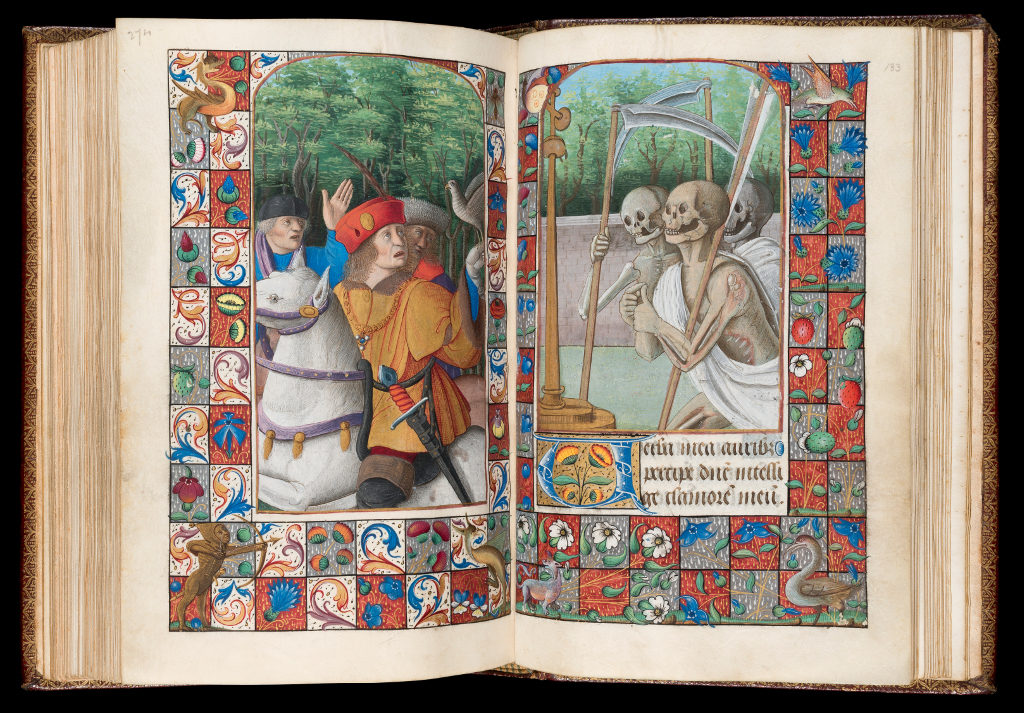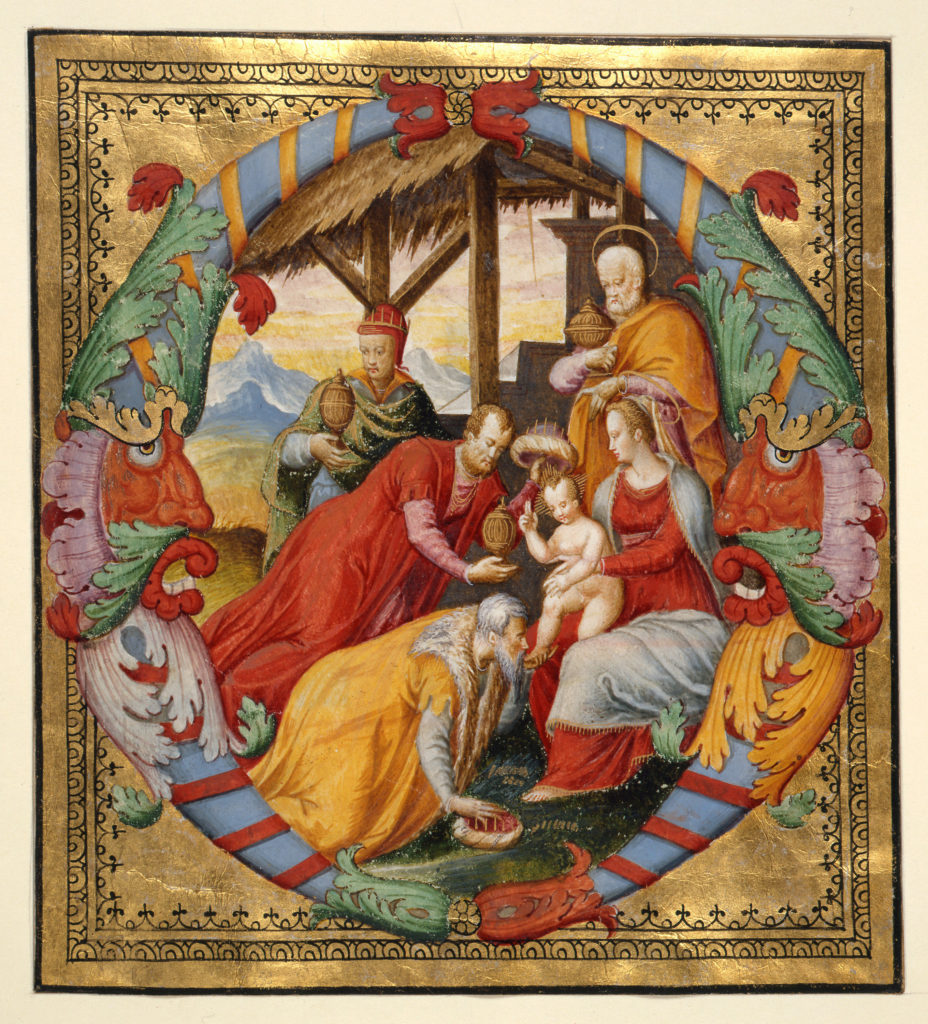Back in March I posted here a series of blog posts concerning proposed EU regulations for the importation of “cultural goods.” The official objective of these regulations was to combat the looting and destruction of important cultural sites and to prevent the financing of terrorism through the trafficking of stolen cultural goods and artefacts. Early books and manuscripts were included among the objects that were targeted by these new rules even though no one I have heard from has yet seen evidence of terrorist finance activity in the rare book market. 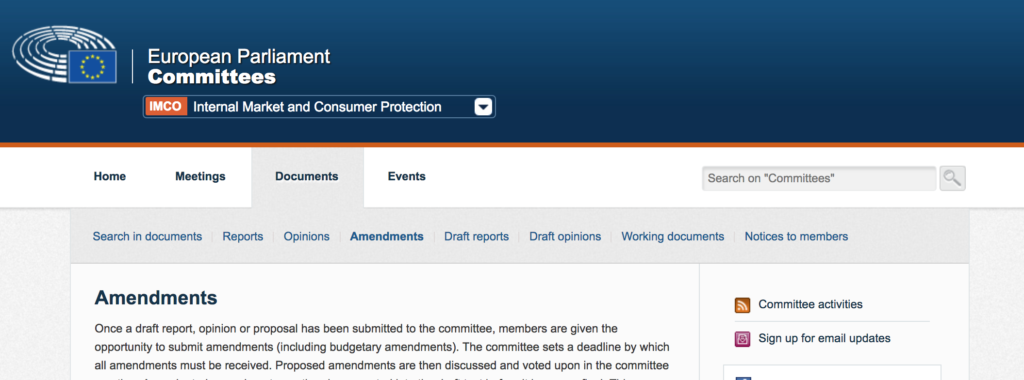
Needless to say, there was a great deal of concern in the antiquarian book market once the details of the proposed regulations became known and understood. The alarm, however, was somewhat relieved by the fact that the next stage in the process would allow for amendments to the initial proposal and that there was acknowledgement among at least some of the people involved that major changes needed to be made.
Well, changes are, indeed, afoot, but whether they improve or worsen the situation probably depends on the age and value of the objects you are interested in and whether they are most often books or manuscripts. For booklovers the extent of the burdens may, indeed, be a bit reduced. But for those who collect early manuscripts (and in some cases not so early) it looks like things will become even worse than originally proposed.
The deadline for making amendments has now passed. There are at least 381 of them, and I must confess to having skipped over a few. From our perspective, however, the most crucial amendments relate to the ANNEX at the end of the proposal. This is where they list all the various categories of cultural goods and define which items will be subject to import controls and which ones will not. There are nine separate proposed amendments, each with a different comprehensive set of rules. The major change being introduced now is the addition of valuation thresholds, although a variety of changes to the original age threshold of 250 years are also included.
The different amendments appear to be the work of the different political parties represented on the committee. All but one of them are proposed by only one, two or three MPs. For example, Amendment 413, sponsored by the 3 MPs from the European Peoples Party, adds a €50,000 minimum value threshold for most of the categories, including “old books, documents and publications of special interest ” that are more than 250 years old. This provides some relief for bibliophiles. However, this amendment leaves unchanged the original proposal as it regards incunabula and manuscripts over 250 years old .
But those amendments are probably all irrelevant. It is Amendment #408, offered by 6 members of the Progressive Alliance of Socialists and Democrats, which seems most likely, if any, to pass. This amendment makes several significant changes. With respect to books, the age threshold is reduced dramatically. Where the original proposal exempted books less than 250 years old, this amendment would reduce the age threshold to only 100 years. On the other hand, relief is offered by the introduction of a price threshold of €50,000 euros. Whether these two changes would raise or lower the number of books that would be covered is hard to say. Incunabula, which presumably includes incunable leaves, are still treated separately and will have no price threshold.
The greatest impact, however, will be on manuscripts. Previously only manuscripts over 250 years old were covered. Amendment #408 would reduce this to 50 years; and there is no compensating price threshold set. Any 51 year-old hand-written document would be subject to these rules regardless of value. There is an exception made for manuscripts belonging to their creators, but this is likely to be a very limited case.
It is extremely hard for me to find any sense here. The fear that terrorists are financing their activities through the looting and trafficking of old letters and hand-written documents seems obviously groundless. I cannot swear that such a thing has never happened and never will, but the extreme improbability of it balanced against the enormous amount of effort and expense involved in controlling it by these methods makes a complete travesty out of any claim that the authors of the regulations had any real concern for the proportionality that their regulations are supposed to respect. Much more could be said on this, but it seems unnecessary.
Another serious problem is created by an idea that appears for the first time in the amendments: minimum value thresholds. These are designed to significantly reduce the number of objects that are covered and thus limit the administrative burden placed on the importers and agencies involved. At first glance this idea makes sense and seems like an improvement over the original regulations, which were to be applied regardless of value. However, nothing is said here about how the these valuation thresholds will, in practice, be implemented. I can imagine only two possibilities.
The first possibility is that the importer would be required to submit an appraisal to prove that his goods fell below the minimum value threshold and were thus exempt from control. As far as I can see, there is no other requirement for a current appraisal as part of the import process. As a result, what we have here is the rather odd consequence that only the goods that are not subject to regulation will have to submit to the expense and delay of competent appraisal. And this assumes that the individual who wants to import something will have access to or know how to find someone with the necessary expertise.
The only alternative I can think of would be to have the importer simply declare a value himself, with or without the needed expertise. But of what use is that? If there are, in fact, terrorist manuscript dealers who are hoping to traffic their booty in the EU then I think they will be unlikely to declare the value of their goods to be in excess of the crucial threshold. In this context self-assessment is meaningless. Only the honest and innocent will be burdened by the rules.
As mentioned, there are 9 different amendments, each with its own age and value threshold. Some are worse than others. For example, Amendment 416 (drafted by MEPs from the Greens/European Free Alliance) does nothing except to change all the age thresholds from 250 years to 75 years. From my perspective Amendment 414 seems the least unreasonable, setting a minimum value threshold of €50,000 for books created before 1700 and for “rare manuscripts and incunabula before 1500 (sic).” But the lack of a reasonable and effective method for implementing the minimum value threshold is still a fatal flaw.
There is, however, one additional amendment (#417) that does seem reasonable and in more sensible alignment with the professed purpose of the proposed rules. Daniel Dalton, an MP from the UK, has proposed a second Annex which reads, simply, “List of Countries at Risk.” No details are provided with the Amendment text found on the European Commission site, but one can easily imagine what this might entail. There already exist restrictions for cultural goods imported from Iraq and Syria. Import regulation for those countries, and any others under similar terrorist threat, do make some sense. Whether on not this amendment can, in fact, accomplish that is not clear. Hopefully it is not too late in the process. As for the other amendments, I think they fall well short of correcting the deeply flawed regulations they attempted to repair.
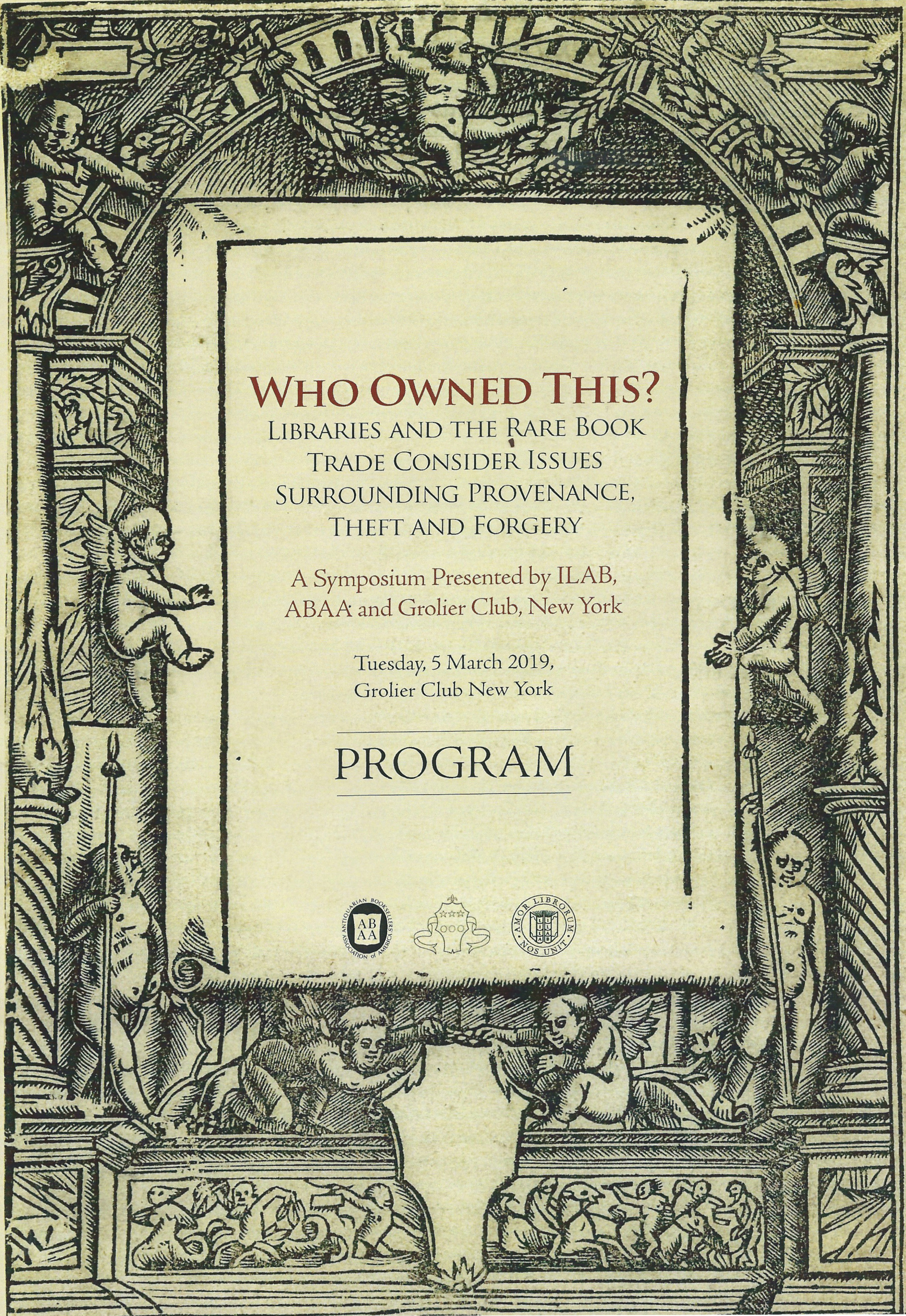 The 8 speakers spoke on various subjects relating to the difficult but timely problems faced by booksellers and librarians in connection with provenance, theft and forgery. I was honored by being assigned the closing position and used it to consider these subjects with a particular regard to the use of databases to protect from theft, recover stolen books and establish provenance. At the end I ventured a few general speculations about how the database technologies of the future may be even more useful for these purposes, including a preview of some of the things that viaLibri will be doing to make use of these technologies. The title of my paper was: “
The 8 speakers spoke on various subjects relating to the difficult but timely problems faced by booksellers and librarians in connection with provenance, theft and forgery. I was honored by being assigned the closing position and used it to consider these subjects with a particular regard to the use of databases to protect from theft, recover stolen books and establish provenance. At the end I ventured a few general speculations about how the database technologies of the future may be even more useful for these purposes, including a preview of some of the things that viaLibri will be doing to make use of these technologies. The title of my paper was: “

